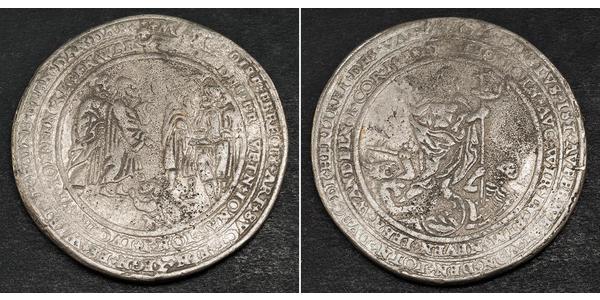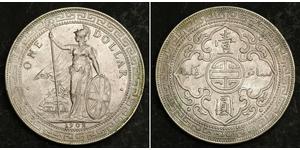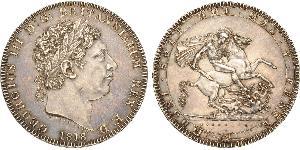(售价 $63.0)
1528, Bohemia. Biblical "Miraculous Draught of Fish. Christ Resurrection" Medal.
Medallist: Utz Gebhard Mint Year: 1528 (here a later, but not recent cast in lead!) Denomination: Schowthaler / Medal - The miraculous catch of 153 fish. Condition: Corrosion scars, which show the age of this old (probably 17th-18th century) cast in lead, tooling marks/scratches on edge, otherwise Fine! Weight: 26.04gm Diameter: 41mm Material: Lead
Obverse: Biblical scene of the "Miraculous draught of fish". Double band of legends around. Legend: MAT 12 DISE EBRECIS ARTSVCT EINZEGEN ES WIRT IR KAINS GEBN DAN DAS/ ZEIGEN DES PROVETN IONAS IOM I LVC II WI ION EIN ZEGEN WAR
Reverse: Biblical scene of the "Resurrection of Christ". Douible band of legends around. Legend: RO 6 CRISTVS IST AVFERWECT VON DEN TOTN DVRC DI HERLIKET DES VATRS/ ALSO SOLN. Katz13. AVC WIR IN EIM NEVEN LEBN WANDELN/ COR 15 IOI
The Miraculous catch of fish or more traditionally the Miraculous Draught of Fish(es), is either of two miracles attributed to Jesus in the canonical gospels. The miracles are reported as taking place years apart from each other, but in both miracles apostles are fishing unsuccessfully in the Sea of Galilee when Jesus tells them to try one more cast of the net, at which they are rewarded with a great catch (or "draught", as in "haul" or "weight"). Either is thus sometimes called a "miraculous draught of fish".
The Resurrection of Jesus is the Christian belief that God raised Jesus from the dead, thus confirming his identity as the Messiah.
In Christian theology, the death and resurrection of Jesus are the most important events, a foundation of the Christian faith, and commemorated by Easter. For Christians, his bodily resurrection is the guarantee that all the Christian dead will be resurrected at Christ's second coming. It was the restoration to life of a transformed body powered by spirit, as described by Paul and the gospel authors, that led to the establishment of Christianity.























